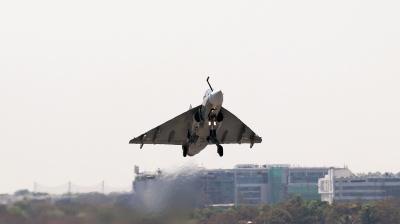Motor mouth: T. Rex could bite with the force of three cars
“T. Rex could much bite through whatever it wanted, as long as it was flesh and bone,” said Florida State University paleobiologist Gregory Erickson.
Washington: Scientists have come up with one more reason to be amazed by Tyrannosaurus Rex. When the huge carnivorous dinosaur took a bite, it did so with an awe-inspiring force equal to the weight of three small cars, enabling it to crunch bones with ease.
Researchers on Wednesday said a computer model based on the T. Rex jaw muscle anatomy and analyses of living relatives like crocodilians and birds showed its bite force measured about 3,630 kg, the strongest of any dinosaur ever estimated.
“T. Rex could much bite through whatever it wanted, as long as it was flesh and bone,” said Florida State University paleobiologist Gregory Erickson.
In quantifying the power of T. Rex’s chomp, they also calculated how it transmitted its bite force through its conical, 18-cm teeth, finding it generated 30,300 kg per square cm of tooth pressure, another measure of its power, on the contact area of the teeth.
Bite marks on fossilised bones of dinosaurs like the horned Triceratops that lived along side Tyrannosaurus some 66 million years ago in North America indicated T. Rex was a bone-cruncher. The ability to pulverise and eat bones gave T. Rex, which was about 13 metres long and weighed about seven tonnes, an advantage over competing predators.
“Predators with bone-crunching abilities are able to exploit a high-risk, high-reward resource — the minerals that make up bone itself and the fatty marrow that is contained inside,” said paleontologist Paul Gignac of Oklahoma State University Center for Health Sciences, lead author of the study published in Scientific Reports.
“The risk is the potential to accrue extreme tooth damage from biting into bone, making it difficult or impossible to capture prey effectively or rupture the long bones of carcasses.”


















